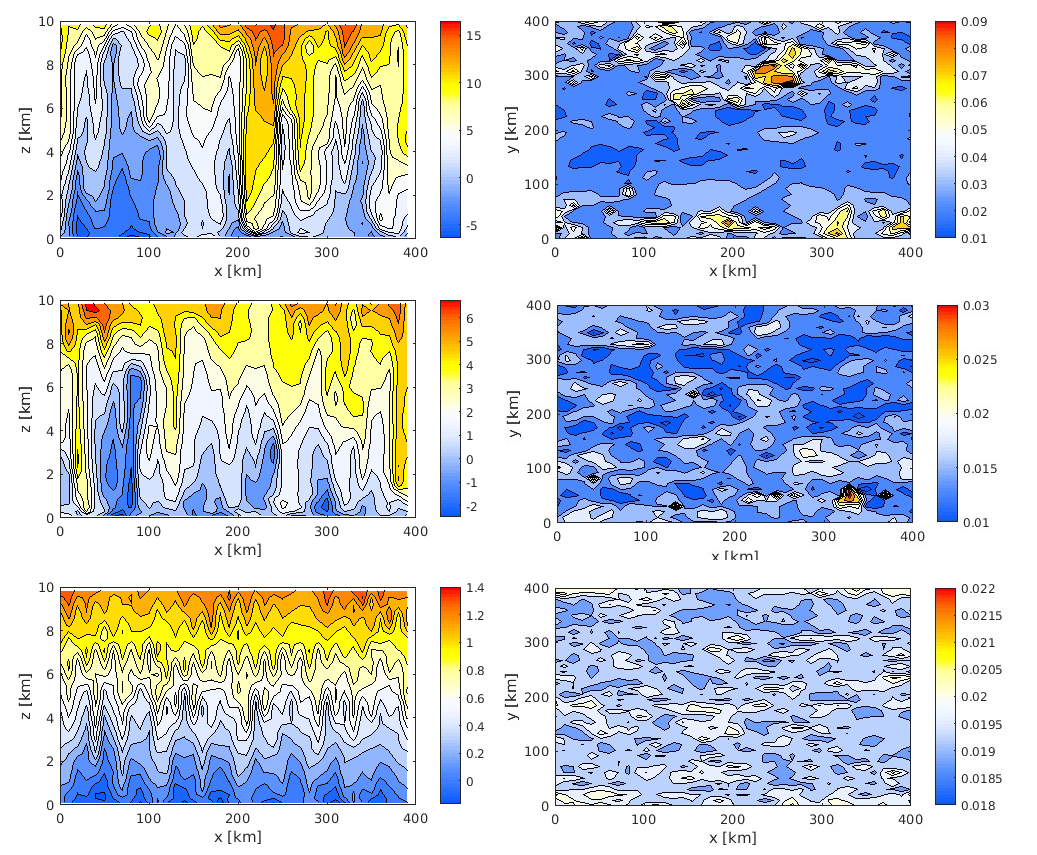- 1KU Leuven, Institute of Astronomy, Department of Physics and Astronomy, Leuven, Belgium (orkun.temel@oma.be)
- 2Royal Observatory of Belgium, Brussels, Belgium
Recent observations suggest that Venus can be geologically active. Geological activity can lead to the surface-atmosphere exchange of aerosols and gases. The vertical transport of aerosols and gases from the surface of Venus to its cloud layer depends on the mixing within the boundary layer of Venus and the free troposphere above. However, the lower atmospheric dynamics of Venus below its cloud deck are poorly constrained. Here, we focused on understanding how the vertical variation of winds can affect the mixing of a trace gas emitted from the surface of Venus with implications for surface outgassing using idealized mesoscale simulations. To do that, we used atmospheric simulations for the first 10 km of the atmosphere of Venus using the Weather Research and Forecasting (WRF) Model v4.4.1 [1]. We aim to understand the response of atmospheric transport of momentum and trace gases to changes in wind shear by performing numerical simulations. We investigate shear-induced PBL and free atmospheric turbulence by conducting numerical experiments across a spectrum of wind shear regimes, ranging from 8 m/s per km to 1 m/s per km (as predicted by the Venus Climate Database [2] and presented in Fig. 1).

Figure 1: Horizontal winds and wind shear as predicted by the Venus Climate Database at local noon
We first investigated how the dynamics of the lower atmosphere of Venus varies in response to different wind shear. As depicted in the left panel of Figure 2, the case with the lowest wind shear (1 m/s per km) has a quasi-uniform horizontal variation of horizontal winds. However, with the increasing wind shear, this quasi-uniform state of the flow breaks down and fronts with different wind speeds occur at the same altitude. This is a result of the onset of overturning motion in stratified turbulence. The shear instabilities lead to the formation of turbulent eddies that can mix the atmosphere in the vertical direction. As these turbulent eddies form and propagate both horizontally and vertically, they entrain the surrounding air into the vertical motion. Entrainment processes caused by the formation of shear-induced eddies then enhances the vertical exchange within and above the PBL. Another indicator of the mixing within the PBL is the friction velocity. Right panel of Figure 2 presents the horizontal variations on the friction velocity showing the gradual increment with the wind shear. We also find that the friction velocity remain under 0.1 m/s as consistent with a previous LES study on the Venusian boundary layer by [3].

Figure 2: Horizontal winds and friction velocity for three different wind shea regimes (2 m/s / 8 km – top, 4 m/s / 8 km – middle, 2 m/s / 8 km – bottom panels)
We then investigate how these distinct flow regimes influence the atmospheric transport of trace gases emitted from the surface with implications for surface outgassing phenomena. As shown in Fig. 3, our results show that for the same time period (10 Earth days), trace gases released from the surface of Venus can have distinct vertical variations. For the case of high wind shear, the released gas is well mixed whereas it can still be confined to the lowermost part of the Venusian atmosphere for the case of low wind shear.
Figure 3: Distribution of surface outgassed tracers after 10 Earth days for two different wind shear regimes: (6 m/s / 8 km – left panel, 1 m/s / 8 km – right panel)
References
[1] Skamarock, William C., et al. "A description of the advanced research WRF version 4." NCAR tech. note ncar/tn-556+ str 145 (2019).
[2] Lebonnois, Sébastien, et al. "The Venus Climate Database." European Planetary Science Congress. EPSC 2021. 2021.
[3] Lefèvre, Maxence. "Venus boundary layer dynamics: eolian transport and convective vortex." Icarus 387 (2022): 115167.
How to cite: Temel, O. and Karatekin, O.: The effect of wind shear on the dispersion of trace gases released from the surface of Venus, Europlanet Science Congress 2024, Berlin, Germany, 8–13 Sep 2024, EPSC2024-1147, https://doi.org/10.5194/epsc2024-1147, 2024.